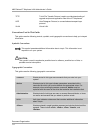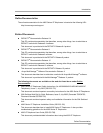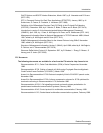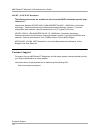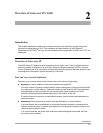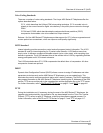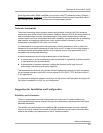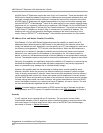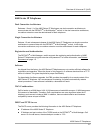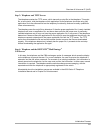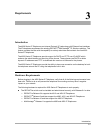
4600 Series IP Telephone LAN Administrator’s Guide
SNMP
2-4
NAT 2
A Network Address Translator is an application that can be administered between your network
and the Internet. The NAT translates network layer IP addresses so your local intranet IP
addresses can duplicate global, Internet addresses. A detailed discussion of NAT is beyond the
scope of this document, but it should be noted that use of NAT can lead to problems affecting the
consistency of addressing throughout your network. In Release 1.6 and earlier Releases of the
4600 Series IP Telephones, NAT is not recommended for networks handling IP-based telephony
traffic. As of Release 1.7, all 4600 Series IP Telephones support NAT interworking; hence, there
are no problems with NAT and Release 1.7 of the 4600 Series IP Telephones. Note, however, that
support for NAT does not imply support for Network Address Port Translation (NAPT). Specifically,
the 4600 Series IP Telephones do not support communication to the PBX through any NAPT
device.
QoS 2
Quality of Service (QoS) is a term covering several initiatives to maximize the quality of the voice
heard at both ends of a call that originates, terminates, or both, on an IP-based telephone. These
initiatives include various prioritization schemes to offer voice packets a larger or prioritized share
of network resources. These schemes include standards such as IEEE’s 802.1D and 802.1Q, the
Internet Engineering Task Force’s (IETF’s) “Differentiated Services”, RTP Control Protocol (RTCP)
and Resource ReSerVation Protocol (RSVP), and port-based priority schemes such as UDP port
selection. Documentation for your LAN equipment will elaborate on the extent your network can
support any or all of these initiatives. See Chapter 4, Server Administration
for some implications
of QoS for the 4600 Series IP Telephones.
As of Release 1.7, both the 4620 and 4630 IP Telephones provide information to the end user
about network audio quality that may be of use to the LAN Administrator. For specific information,
see QoS with 4620 and 4630 IP Telephones
on page 4-22.
SNMP 2
Simple Network Management Protocol (SNMP) is a family of standards-based protocols and
procedures to allow vendor-independent management of data networks. Using a simple set of
protocol commands, an SNMP-compliant device will store information in standard format in one or
more Management Information Bases (MIBs). In general, devices will support the standards-
specific MIB termed MIB-II. In addition, devices may define one or more "custom MIBs" that
contain information about the specifics of the device.
Release 1.1 of the 4600 Series IP Telephones is fully compatible with SNMPv2c (a later version of
SNMP) and with Structure of Management Information Version 2 (SMIv2), although the telephones
will respond correctly to queries from entities that comply with earlier versions of SNMP, such as
SNMPv1. "Fully compatible" means that the telephones will respond to queries directed either at
the MIB-II or the Custom MIB. The 4600 Series IP Telephone Custom MIB is read-only (values
therein cannot be changed externally via network management tools). Similarly, although the 4600
Series IP Telephone’s MIB-II has read/write permissions in accordance with the standard, to
improve security any writes to MIB-II are saved but otherwise ignored.



